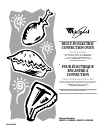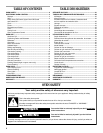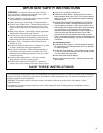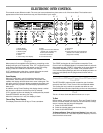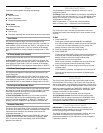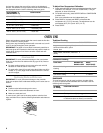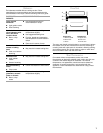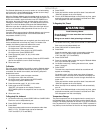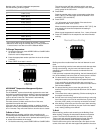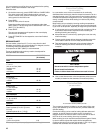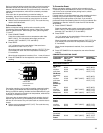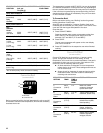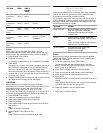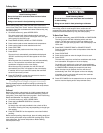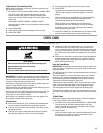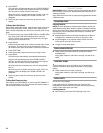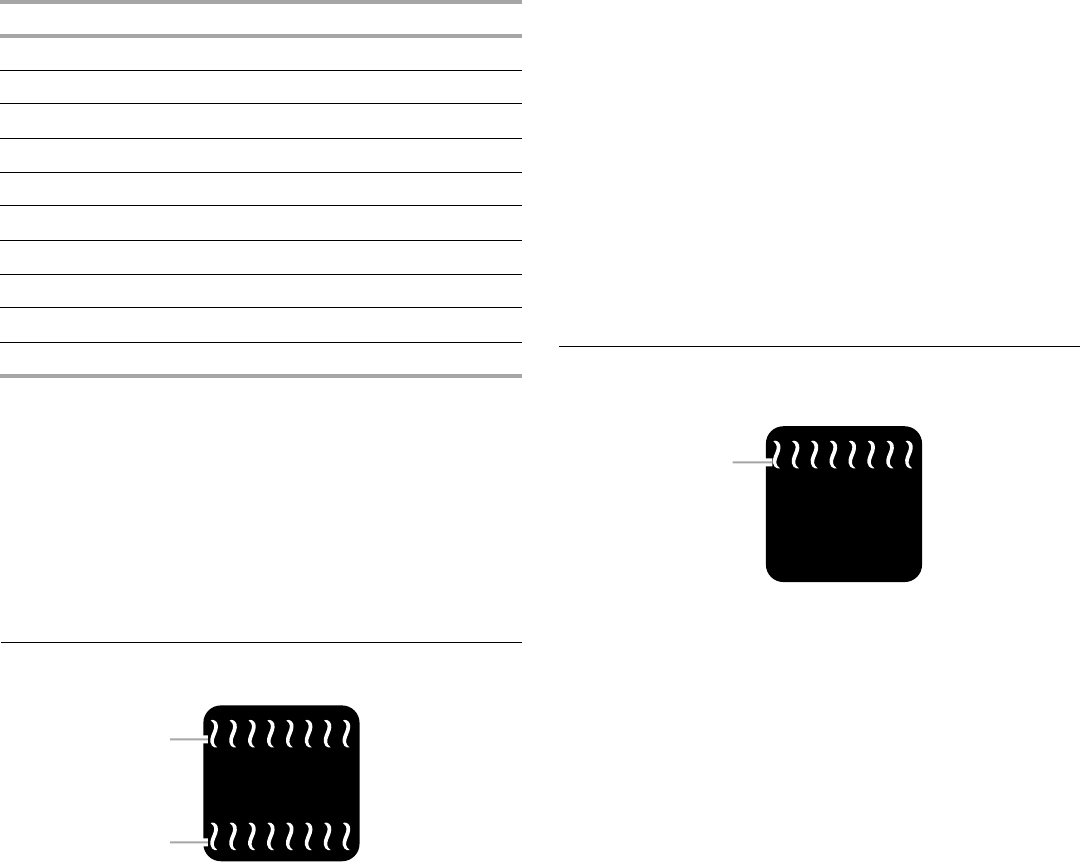
9
Number pads 1 through 0 represent temperatures.
Use the following chart as a guide.
*The number pads must be pressed for at least 1 second.
**Make sure when using the number pad 6, it is only pressed for
1 second since it can also turn off the Sabbath Mode.
To Change Temperature:
1. On double ovens only, press UPPER OVEN or LOWER OVEN
for at least 1 second.
Each oven can be independently set.
2. Press the appropriate number pad from the chart for at least
1 second.
3. Press START for at least 1 second.
Baking and Roasting
ACCUBAKE
®
Temperature Management System
(on some models)
The ACCUBAKE
®
system electronically regulates the oven heat
levels during preheat and bake to maintain a precise temperature
range for optimal cooking results. The bake and broil elements
cycle on and off in intervals. This feature is automatically
activated when the oven is in use.
The bake element is hidden under the floor of the oven,
separated from spills and drips
If the oven door is opened during baking or roasting, the broil
elements will turn off immediately and the bake element will turn
off in 2 minutes. They will come back on once the door is closed.
To Bake or Roast:
Before baking or roasting, position racks according to the
“Positioning Racks and Bakeware” section. When roasting, it is
not necessary to wait for the oven to preheat before putting food
in, unless recommended in the recipe.
1. On double ovens only, press UPPER OVEN or LOWER OVEN.
The cavity symbol will flash indicating which oven was
chosen. The left cavity symbol is the upper oven; the right
cavity symbol is the lower oven.
2. Press BAKE.
Press the number pads to enter a temperature other than
350°F (180°C). The bake range can be set between 170°F
and 500°F (75°C and 260°C).
3. Press START.
“Lo” will appear on the oven display if the actual oven
temperature is under 170°F (75°C).
When the actual oven temperature reaches 170°F (75°C), the
oven display will show the temperature increasing in
5° increments.
When the set temperature is reached, if on, 1 tone will sound.
4. Press OFF/CANCEL for the respective oven when finished
cooking.
Maxi and Econo Broiling
Broiling uses direct radiant heat from the broil element to cook
food.
During maxi broiling, both the inner and outer broil elements heat.
During econo broiling, only the inner broil elemnt heats. The
element(s) cycle on and off in intervals to maintain the oven
temperature.
If the oven door is opened during broiling, the broil element(s) will
turn off immediately and come back on once the door is closed.
■ For best results, use a broiler pan and grid. They are
designed to drain juices and help avoid spatter and smoke.
If you would like to purchase a broiler pan, one may be
ordered. See “Assistance or Service” section to order. Ask for
Part Number 4396923.
■ For proper draining, do not cover the grid with foil. The
bottom of the pan may be lined with aluminum foil for easier
cleaning.
■ Trim excess fat to reduce spattering. Slit the remaining fat on
the edges to avoid curling.
■ Pull out oven rack to stop position before turning or removing
food. Use tongs to turn food to avoid the loss of juices. Very
thin cuts of fish, poultry or meat may not need to be turned.
■ After broiling, remove the pan from the oven when removing
the food. Drippings will bake on the pan if left in the heated
oven, making cleaning more difficult.
To Broil:
Before broiling, position rack according to the Broiling Chart.
When broiling, changing the temperature allows more precise
control. The lower the temperature, the slower the cooking.
Thicker cuts and unevenly shaped pieces of meat, fish and
poultry may cook better at lower broiling temperatures.
Position food on the grid on the broiler pan, then place it in the
center of the oven rack with the longest side parallel to the door.
NUMBER PAD* OVEN TEMPERATURE
1 170°F (77°C)
2 200°F (95°C)
3 250°F (120°C)
4 275°F (135°C)
5 300°F (150°C)
6** 325°F (163°C)
7 350°F (177°C)
8 375°F (191°C)
9 400°F (204°C)
0 450°F (232°C)
A. Broil heat
B. Bake heat
A
B
A.Broil heat
A



